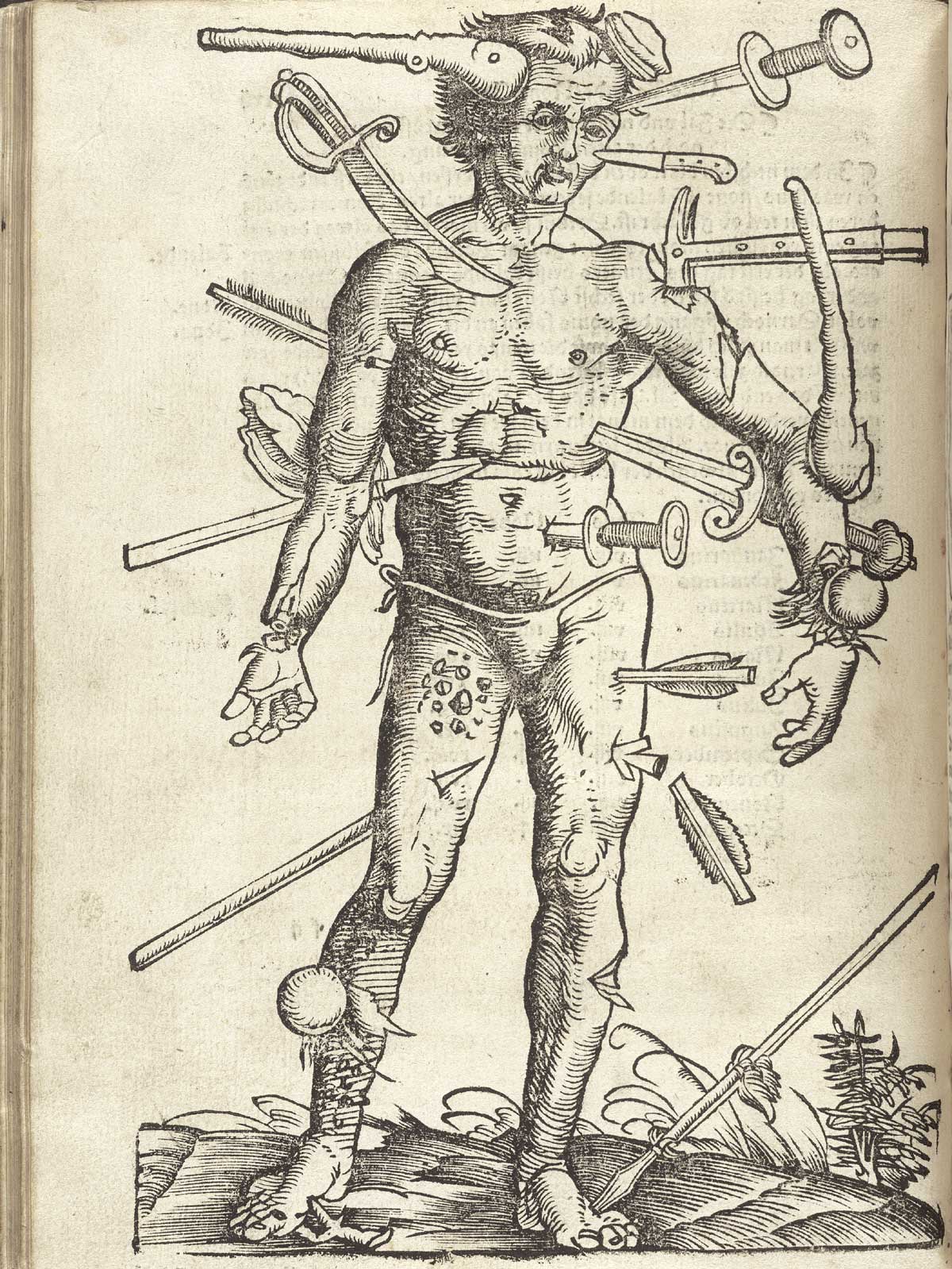The Wound Man is a surgical diagram which first appeared in European medical manuscripts of the fourteenth and fifteenth centuries.
The illustration acted as an annotated table of contents to guide the reader through various injuries and diseases whose related cures could be found on the text’s nearby pages. The image first appeared in a printed book in 1491 when it was included in the Venetian Fasciculus medicinae, likely Europe’s first printed medical miscellany.
Thereafter it circulated widely in printed books until well into the seventeenth century.
The Wound Man has since become a recognisable figure in popular culture.
The Wound Man illustrates various injuries that a person might receive through war, accident, or disease: cuts and bruises from multiple weapons, rashes and pustules, thorn scratches, and the bites of venomous animals.
The figure also includes some schematic anatomical outlines of several organs within his unusual, transparent abdomen.


